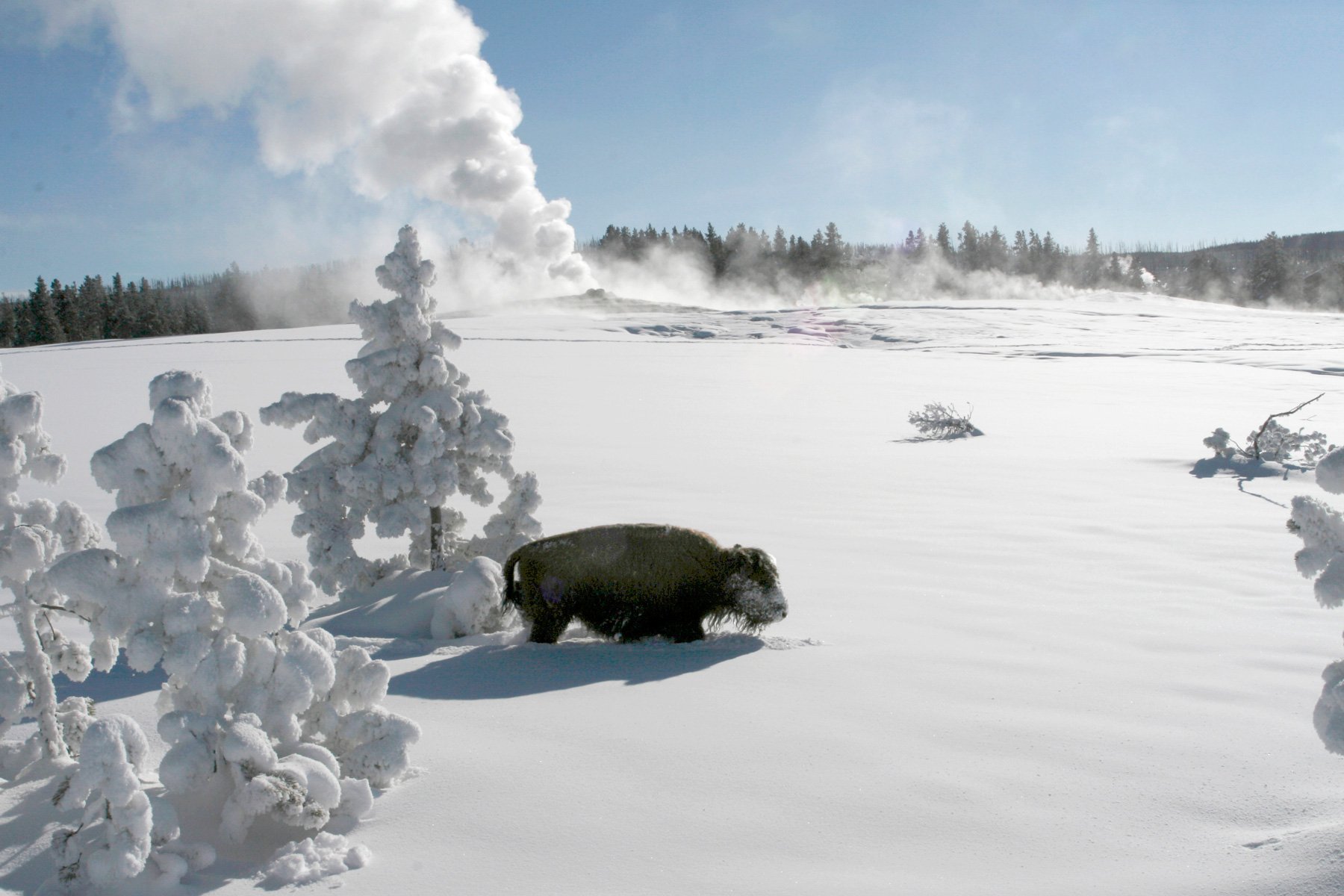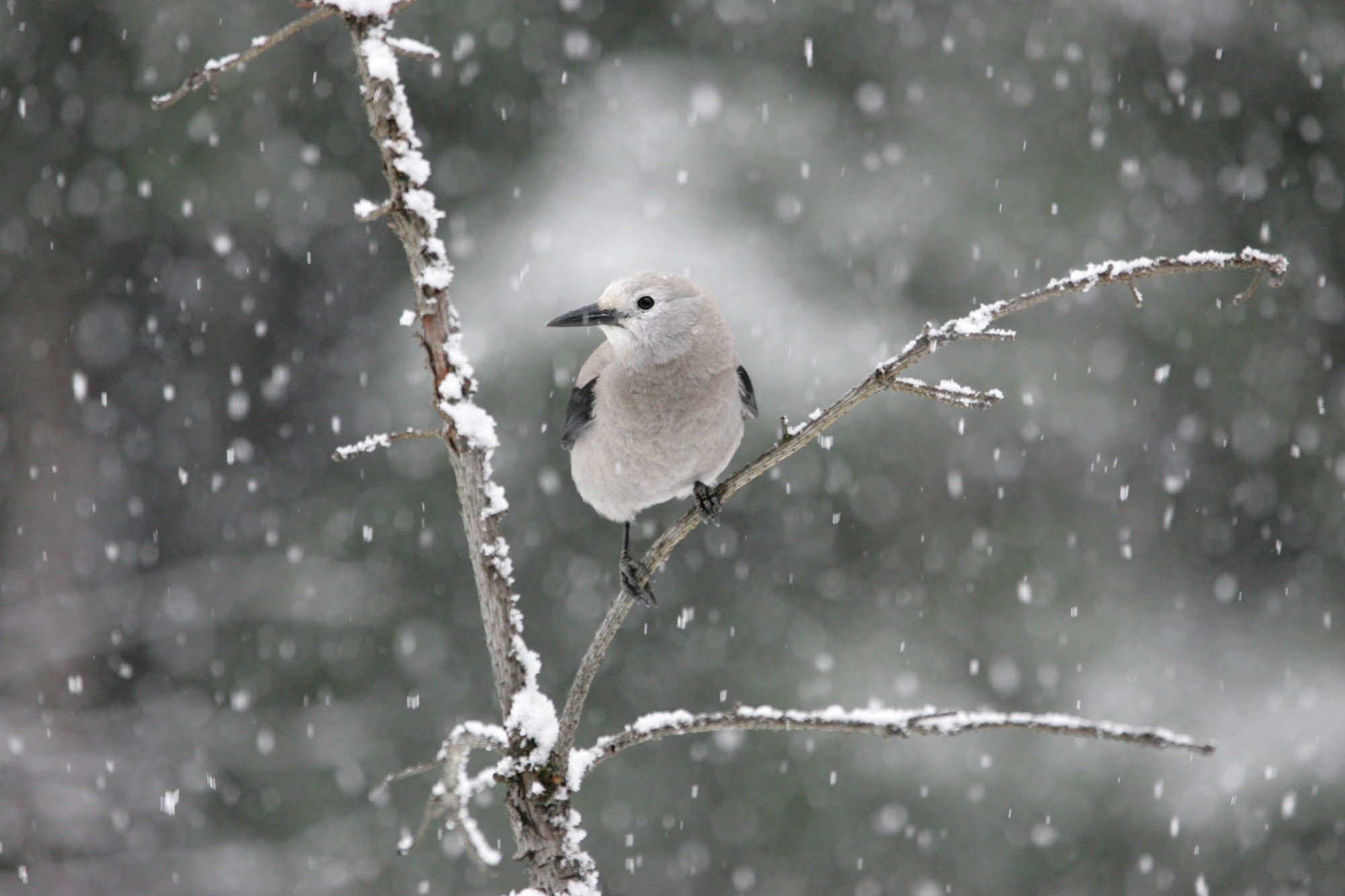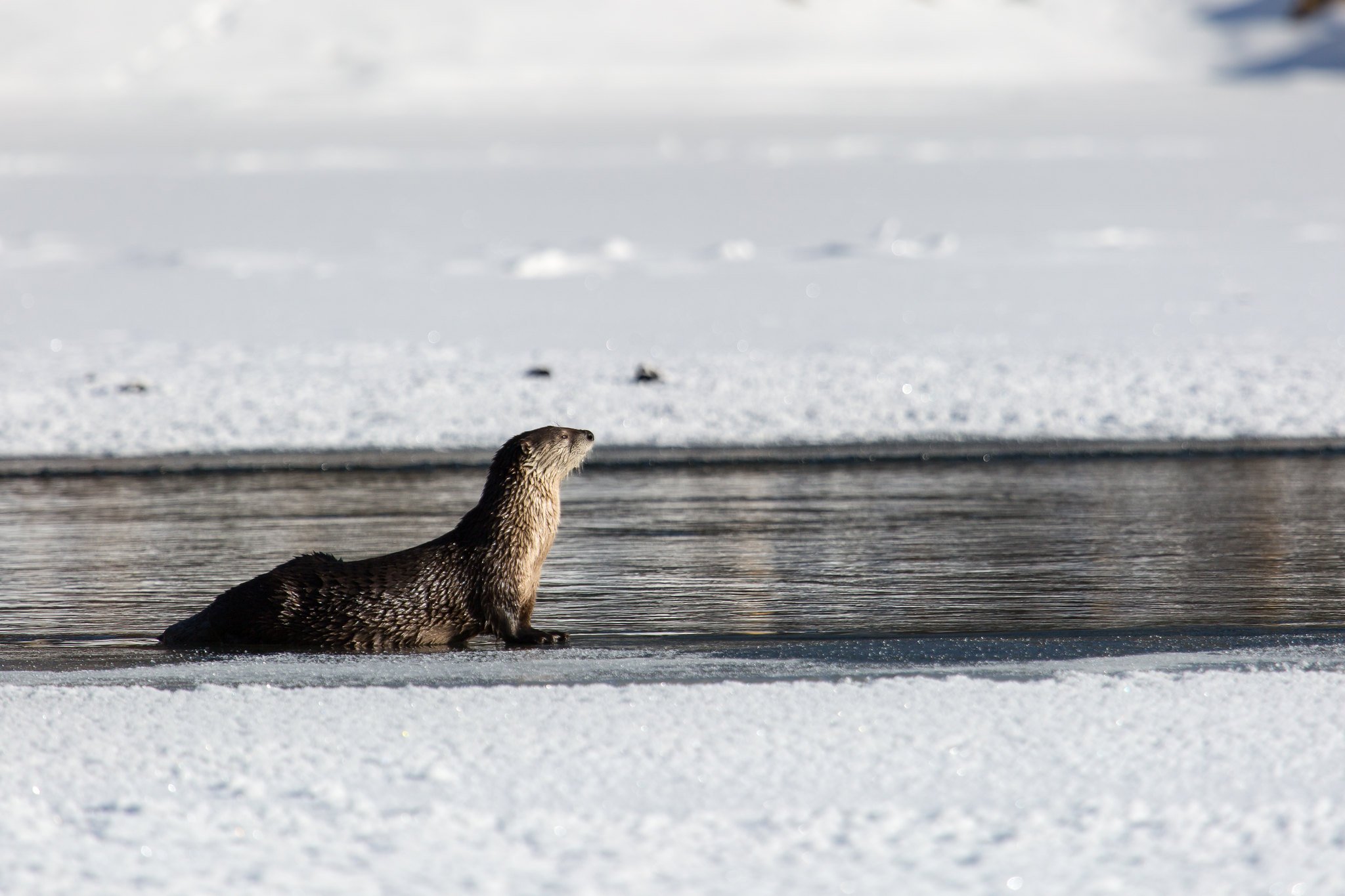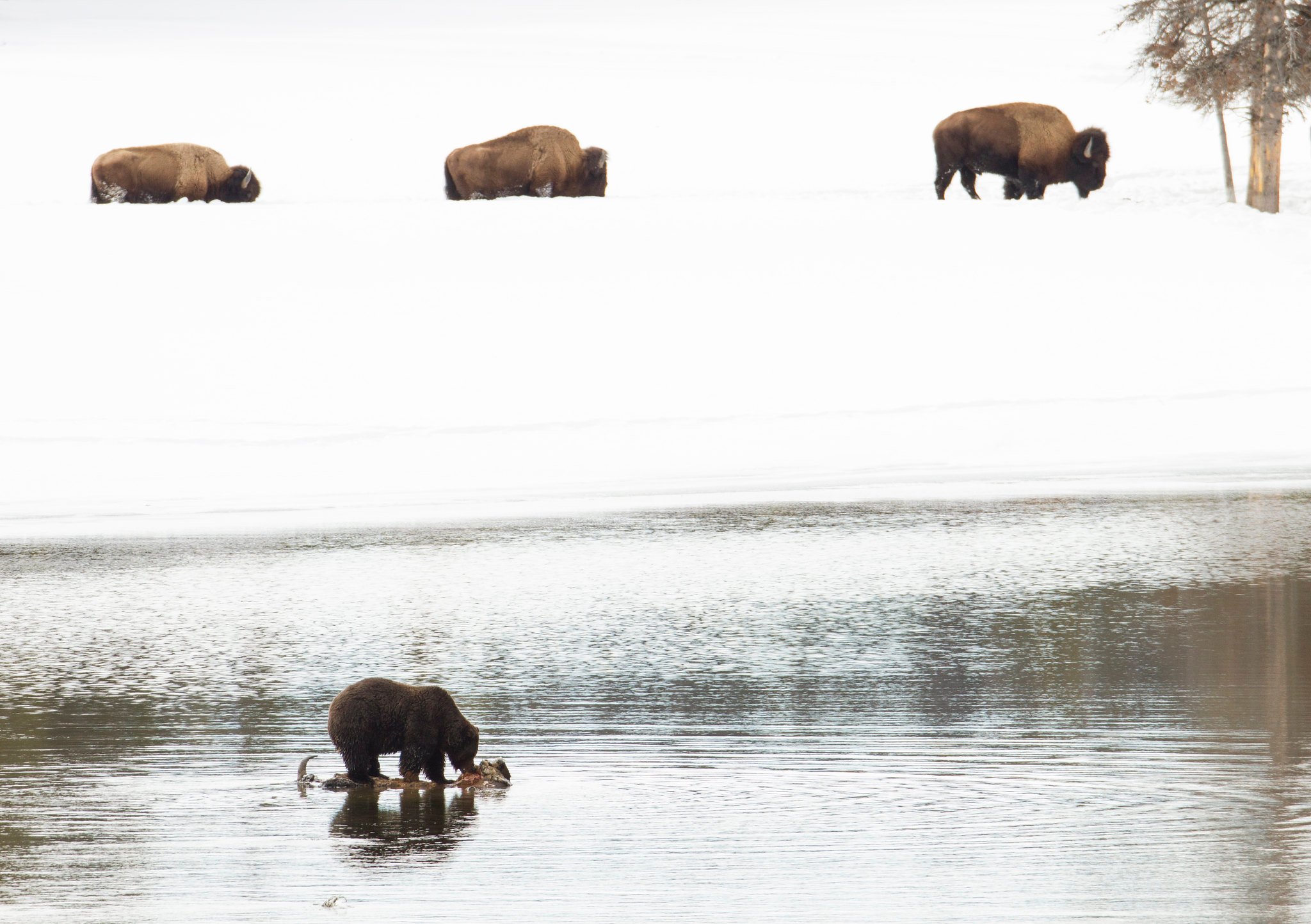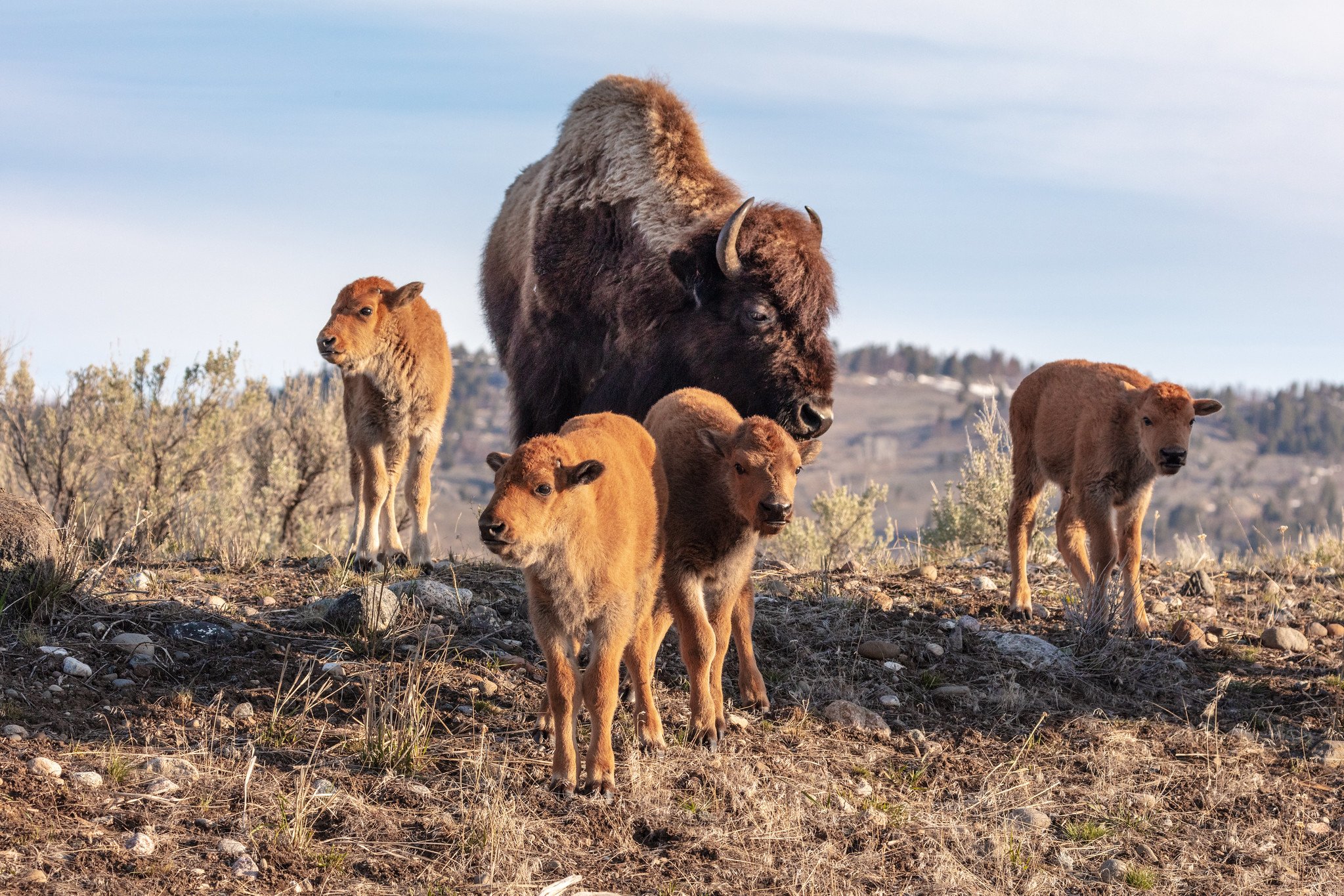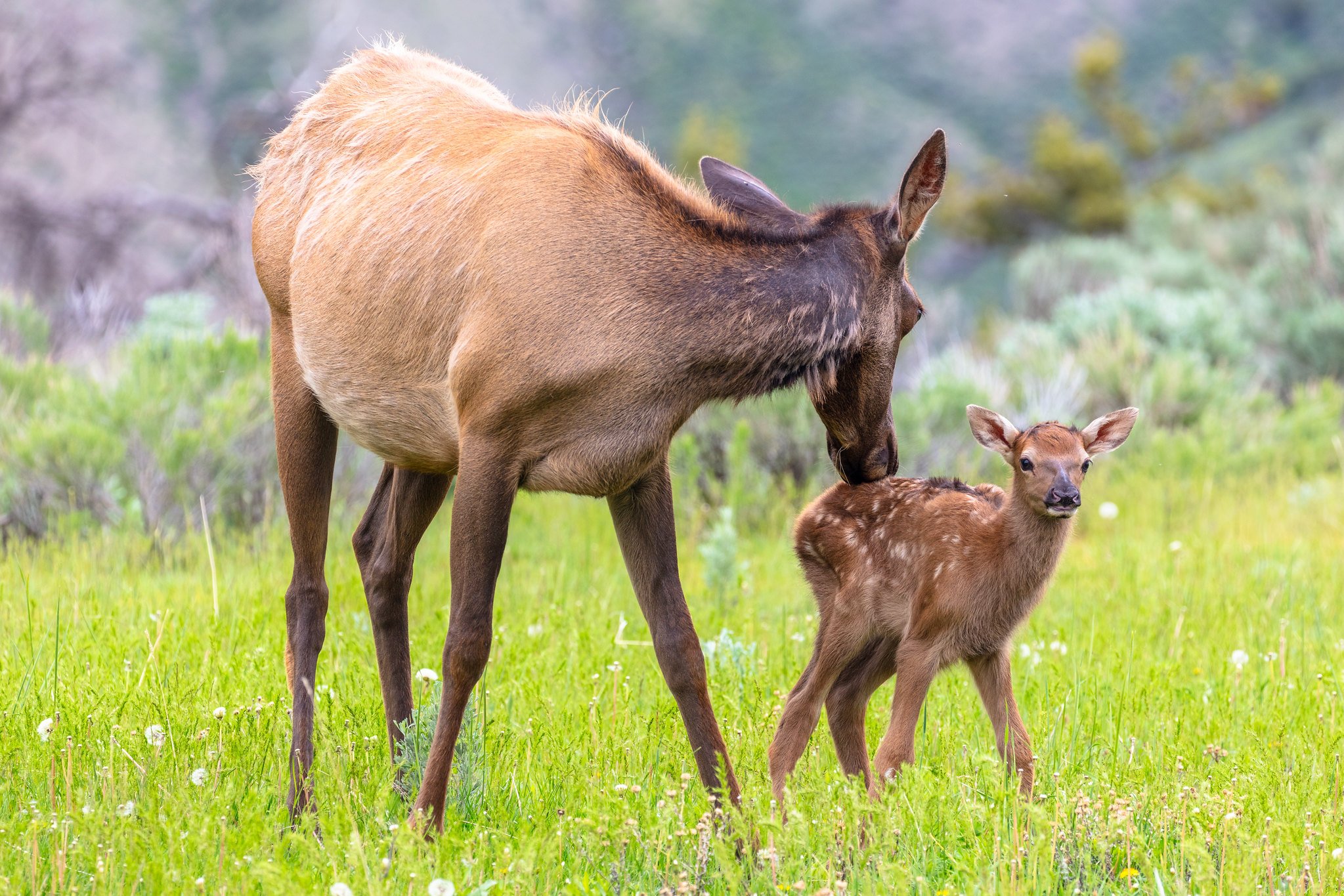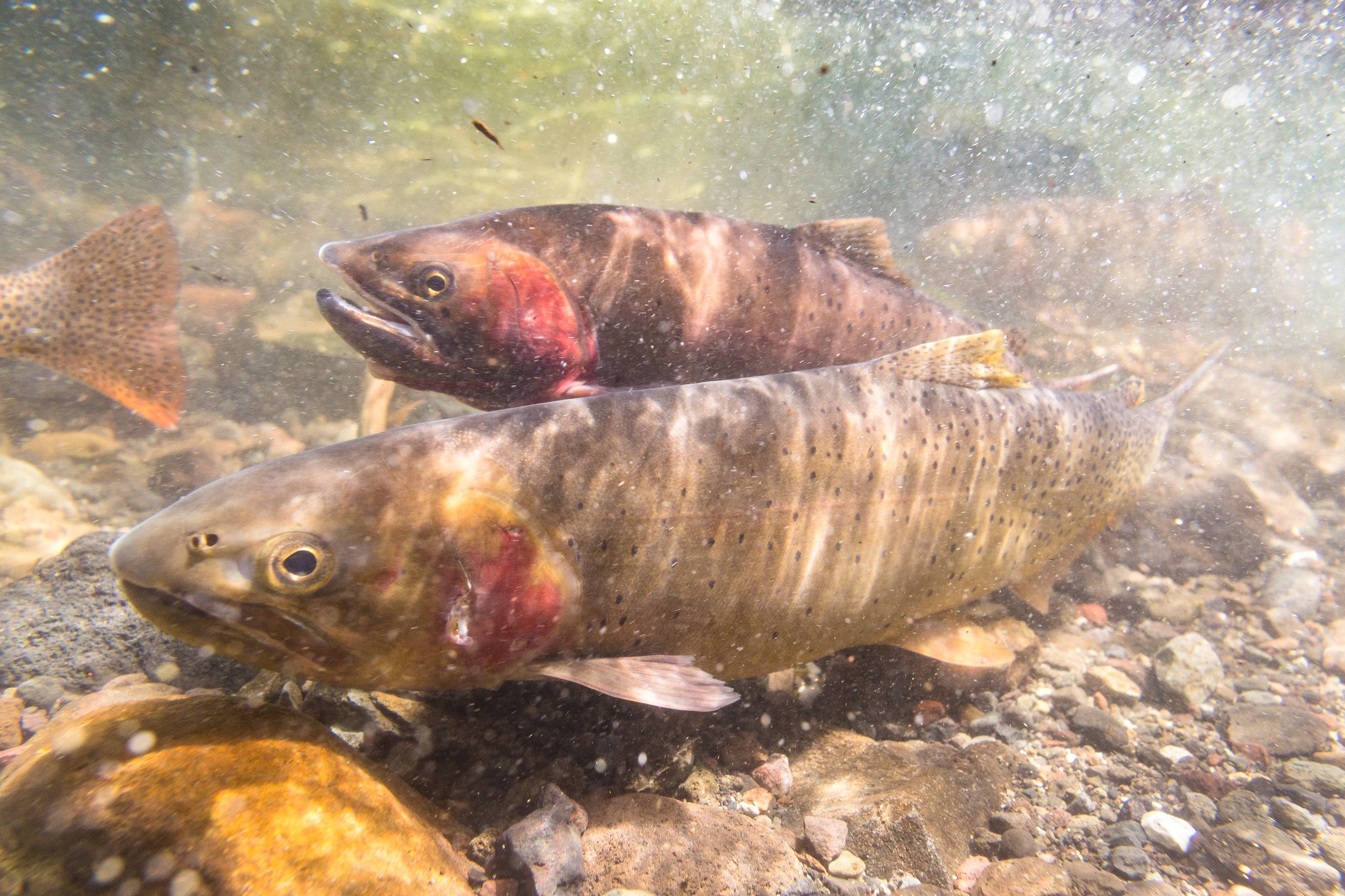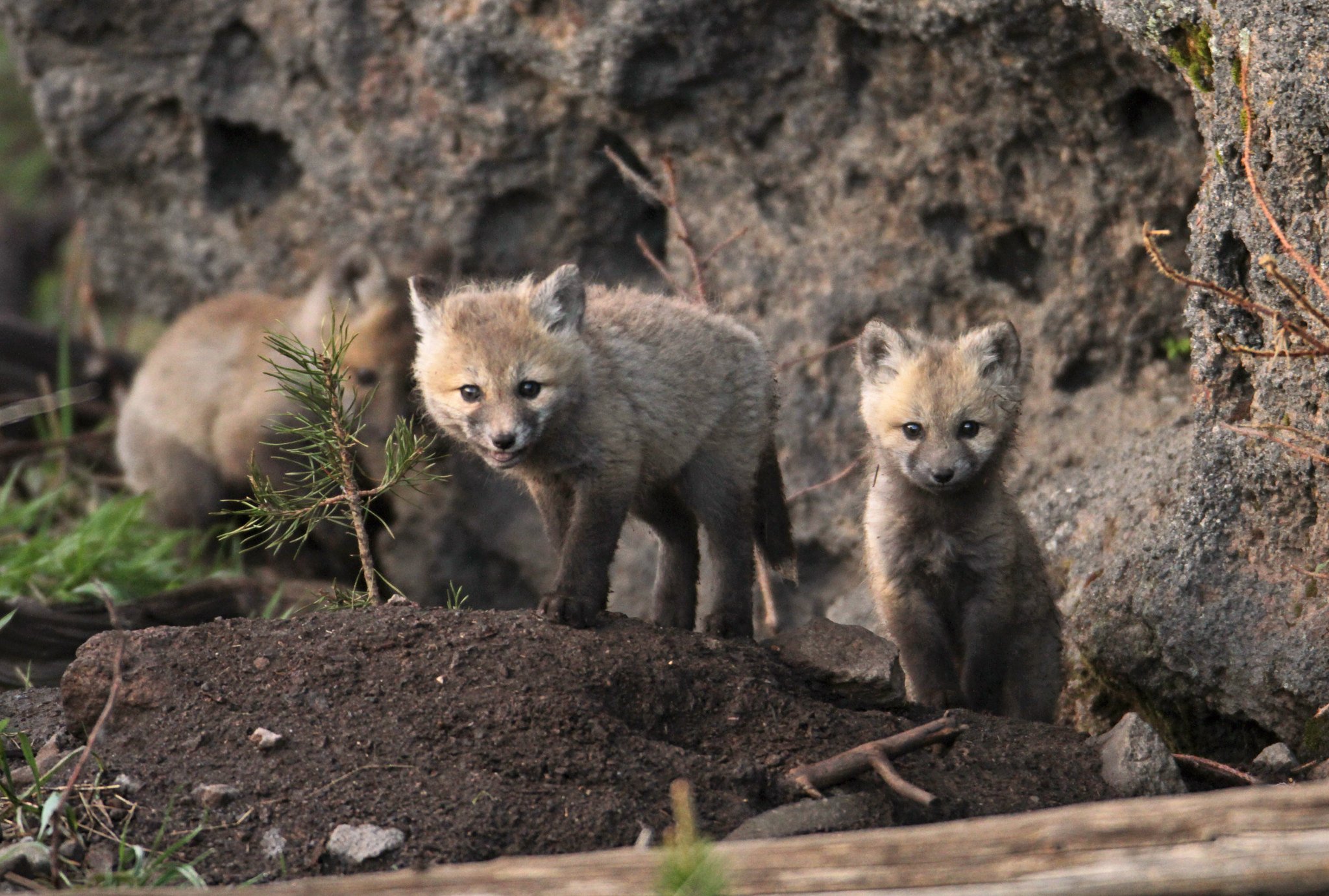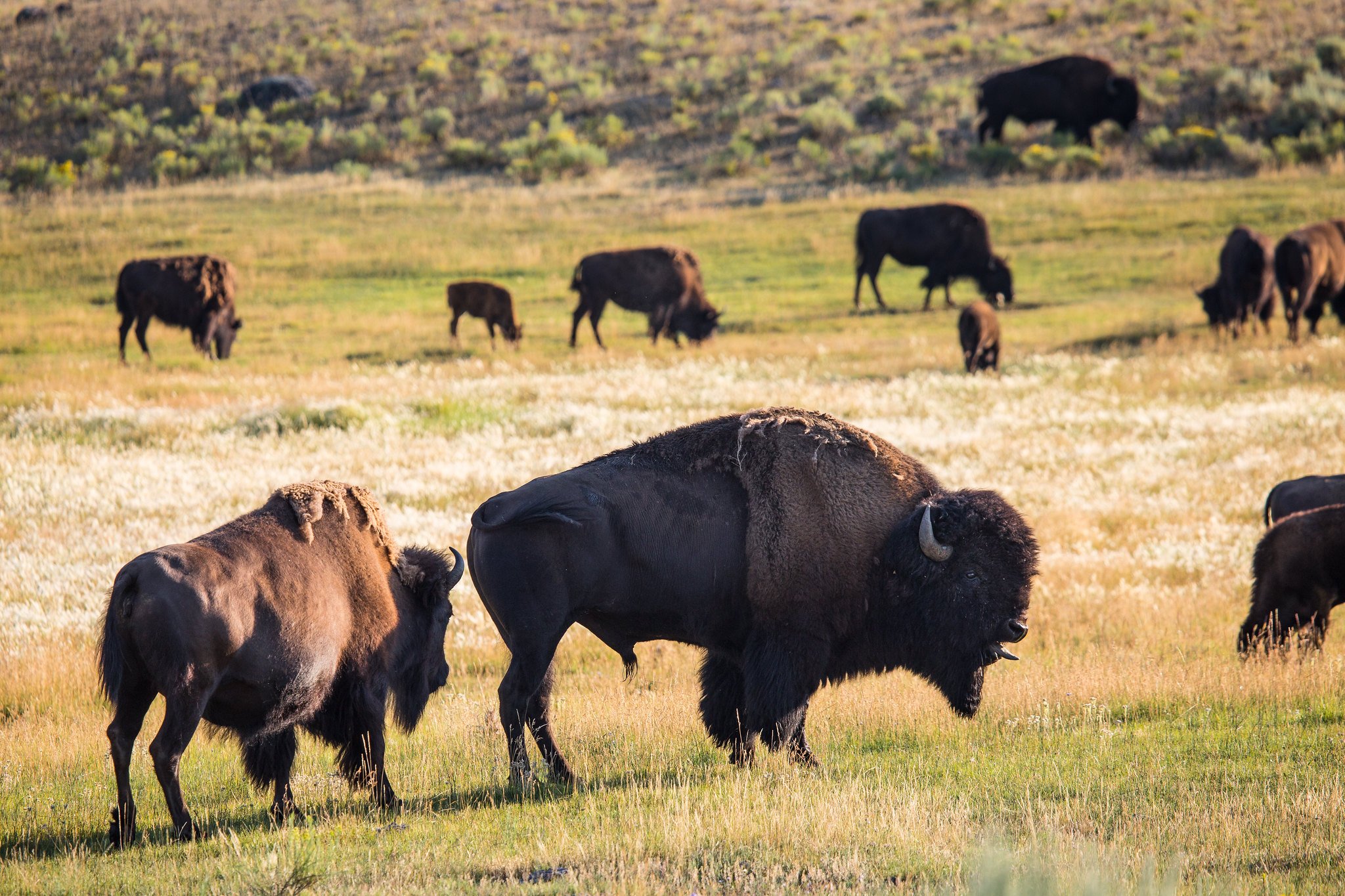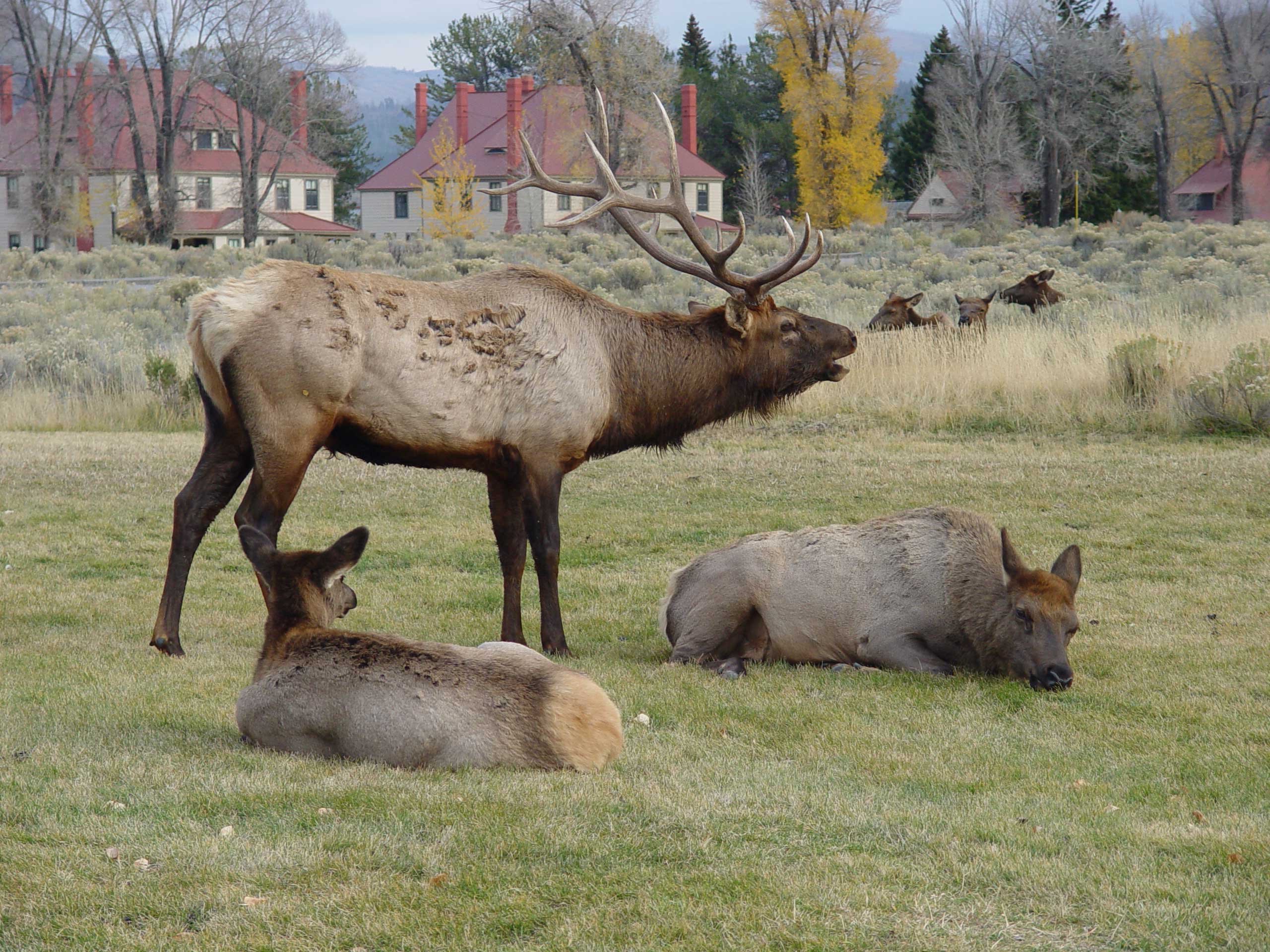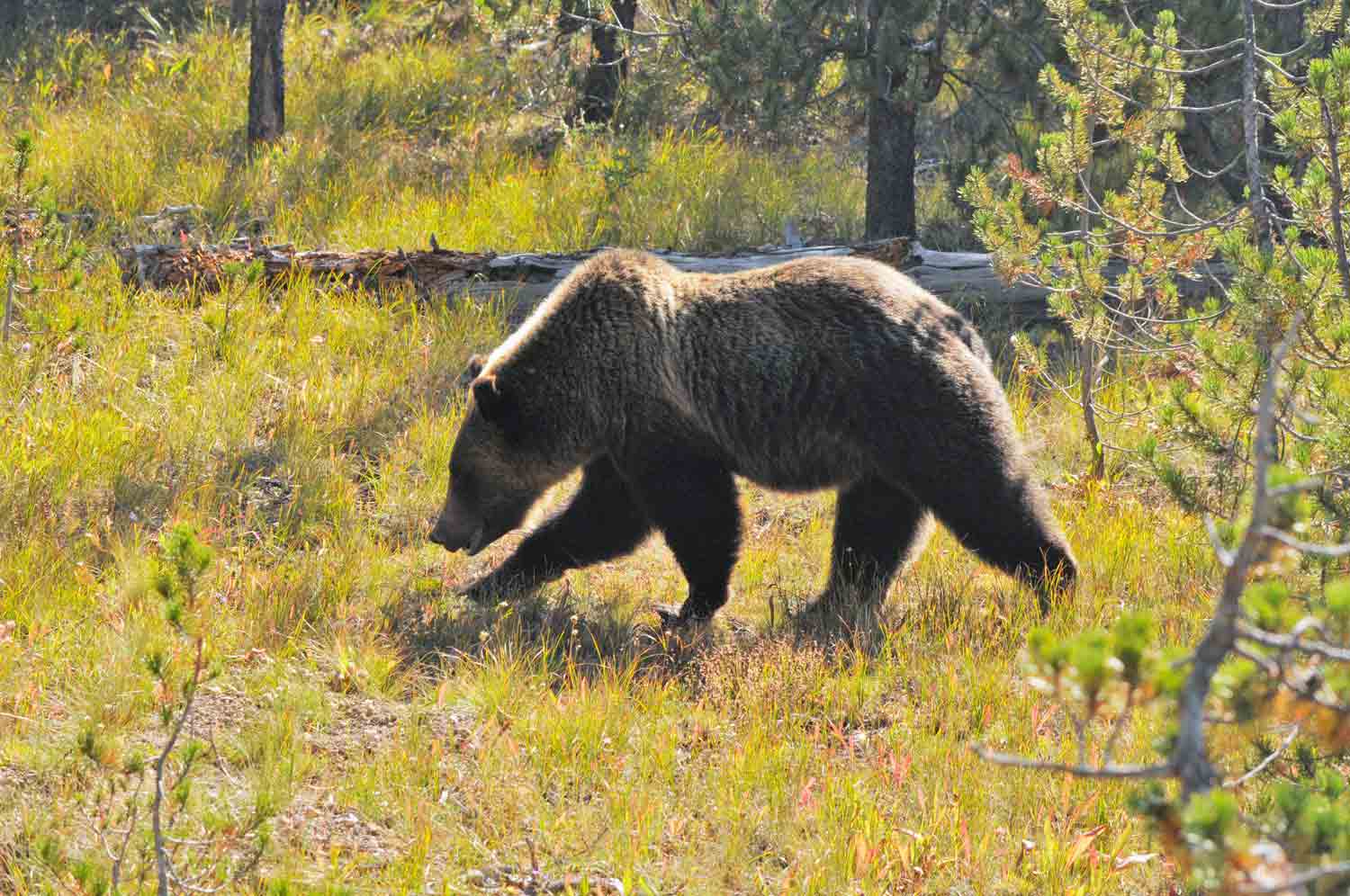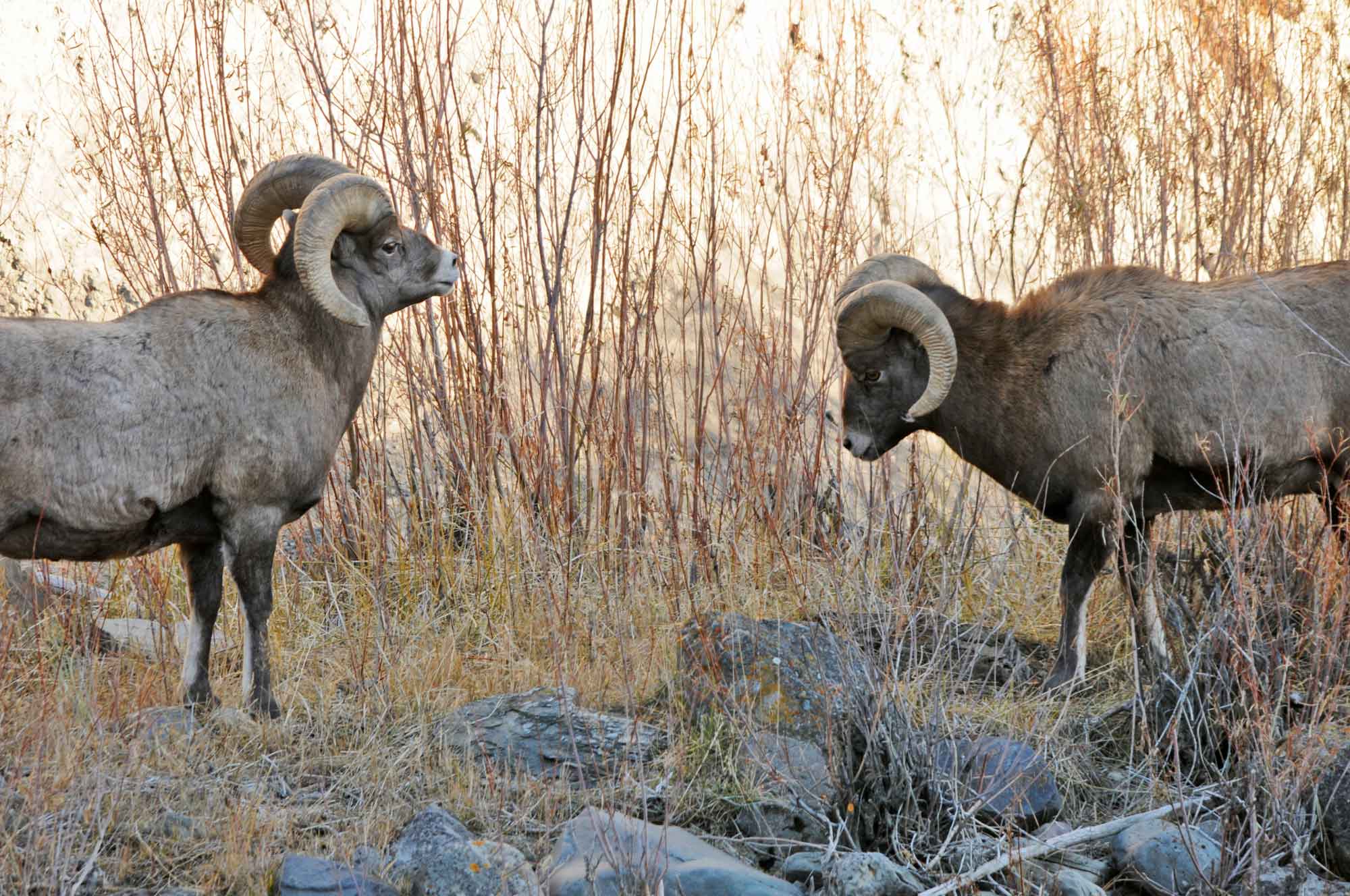Guide to Watching Wildlife in Yellowstone By Month
A Year of Yellowstone Wildlife Watching
Yellowstone is the center of an ecosystem-scale wildlife tapestry with threads that stretch all across parts of the western hemisphere. Each season, birds and mammals pulse in and out of Yellowstone’s critical wildlife habitat in an annual cycle of movement that is as old as the land itself.
Raptors and neotropical migrants wintering as far away as the Gulf of Mexico and Argentina return to have their young in Yellowstone. The park’s ungulate species (elk, bison, pronghorn, etc.) travel as far as 150 miles from winter range to the lush grasslands, pursued by a full complement of predators–bears, wolves, coyotes, mountain lions, and more.
Yellowstone is the largest intact ecosystem in the lower 48 states, and the wildlife show is second to none. No matter when you visit the park, you’ll get a front-row seat. Here’s a guide to Yellowstone wildlife watching by month.
YELLOWSTONE IN WINTER
January
The park is buried deep beneath a white comforter of snow. Wolves become easier to see against a winter backdrop, and elk are forced to lower elevation where food is more available. The hundreds of bird species visible in summer have dwindled to a few dozen; among them are the mountain and black-capped chickadee, red-breasted nuthatch, Townsend’s solitaire, gray jay, and Clark’s nutcracker.
Under the insulating snow, a thriving ‘subnivean’ layer protects insects, plants, and small rodents. Clues to this underground world are visible from the tracks of the long and short- tailed weasels, foxes, and coyotes which prey upon the small mammals below.
February
Wolf and coyote mating season begins in earnest. Yellowstone in February is also the heart of courtship and nesting season for great horned owls. Otters can be seen diving for fish and rolling on the banks along the few stretches of open water, their belly-wide ‘sledding’ marks of playful sliding between fishing holes evident in the snow.
Many elk and bison fall victim to the rigors of the long winter, providing food for bald eagles, coyotes, foxes, ravens, and wolves. Bear cubs are born deep in their dens, where they will remain for several more months. The park’s pronghorn have exited the central northern range for the high desert in and around Gardiner, Montana.
YELLOWSTONE IN SPRING
March
Although much of Yellowstone in March is still covered in snow, the first signs of spring appear. Male bears emerge from their dens in search of the carcasses of winter-killed animals, leaving their tell-tale paw prints in the snow. Winter weary bison begin to return to Blacktail Ponds and points east from the Gardiner basin.
Flashes of blue, rusty orange, and bright yellow signal the first wave of birds returning to the ecosystem. Sandhill cranes, ducks, robins, swans, geese, red-tailed hawks, bluebirds, and meadowlarks are among the first to return.
April
Neotropical migrants are the next to grace Yellowstone with their wings—warblers, flycatchers, tanagers, swallows, loons, peregrine falcons, osprey, and others—who travel from Mexico, Central America, and South America. They follow prevailing winds on an airborne path called the Central Flyway through Texas and along the Rocky Mountains.
Yellowstone in April is also the month for bison calves that pop up all over the northern range. They try out their new legs, running, jumping, and frolicking with each other as they keep up with the herds.
May
Every May in Yellowstone, as the meadows turn emerald green and snow recedes to the mountain tops, mother bears appear on the scene with cubs in tow, grazing in meadows filled with spring beauty and buttercup blooms.
The first newborn elk calves can be seen trying to stand on thin, wobbly legs. They’ll remain relatively free of scent for several weeks, hiding in tall grass and sagebrush for hours at a time until they are ready to keep up with mom.
Chorus frogs can be heard in marshy areas, ruffed grouse are drumming in the forests, and wolf pups take their first steps outside the den. Rivers and streams swell with snowmelt.
YELLOWSTONE IN SUMMER
June
In June, animals of all stripes and colors are raising babies, from marmots to pronghorn. Also abundant are the predators that hunt them: grizzlies search the sagebrush to find hidden elk calves, badgers raid ground squirrel dens, and peregrine falcons are busy shuttling avian prey back to their downy-white chicks.
Spawning trout provide food for otters and bears. Bighorn lambs take their first steps in steep canyons and cliffs. Over 150 species of breeding birds now occupy cliff ledges, tree limbs, trunk cavities, grasslands, marshes, and treetops.
July
Wolf pups venture to a ‘rendezvous site’ where they will spend most of the summer in the care of wolf babysitters. Coyote pups explore their new world. Grizzly bears meander up to the high mountain peaks, searching for army cutworm moths sheltering under piles of rock.
Elk and bison are resplendent in their sleek summer coats. The bright green of spring transitions to the gold color of straw as grasses cure, and the risk of forest fires rises. Rivers and streams, finally purged of snowmelt from the high country, become a fly fishing mecca.
August
The thunderous bellows of bull bison boom as the bison rut ramps up every August in Yellowstone, and great herds gather in the Lamar and Hayden Valleys. Two thousand pound bulls posture and fight for rights to breeding females. A few weeks later, the pronghorn are mating, and red squirrels stash pine cones and seeds for the next winter. Most of the Uinta ground squirrels are already back underground for hibernation.
YELLOWSTONE IN FALL
September
The eerie high pitched bugle of bull elk echoes across the peaks and valleys by the second week of September in Yellowstone. Overhead, migratory hawks and eagles begin their winter travels south and west, soaring over mountaintops like Mount Washburn. Bears return to lower elevations to build up fat for denning season, gorging on ripe berries, rose hips, and bull bison that perished during the rut. Bright fall hues of gold and orange grace the park as aspen, wild rose, sticky geranium, and mountain ash change color with the season.
October
As snow accumulates, male grizzlies follow wolf packs to steal a few more meals before denning season, while female grizzlies search for a den location. Most of the summer resident birds have departed by October in Yellowstone, and the birds and mammals who stay the winter start to build up deep coats of feathers and fur. Gone are the sleek red elk and deer of late summer, and in their place are the attractive tan and gray-coated versions ready for cold.
November
Deer and bighorn sheep are at the peak of their rut around Thanksgiving; lucky visitors will hear the resounding “smack” of bighorn rams butting heads over females. Snowshoe hare, white-tailed jackrabbits, and weasels all trade their brown summer fur for coats of white, to better outwit each other over the long winter dance ahead.
December
Migratory trumpeter swans return to Yellowstone in December, floating serenely along the Yellowstone and Firehole rivers. Except for the remaining elk and bison that stay put along the rivers and thermal areas, the last of the summer wildlife depart for winter range, and much of life in interior Yellowstone goes dormant. On the northern range, the fight for survival between predator and prey begins as elk gather at lower elevation, and the wolves follow.
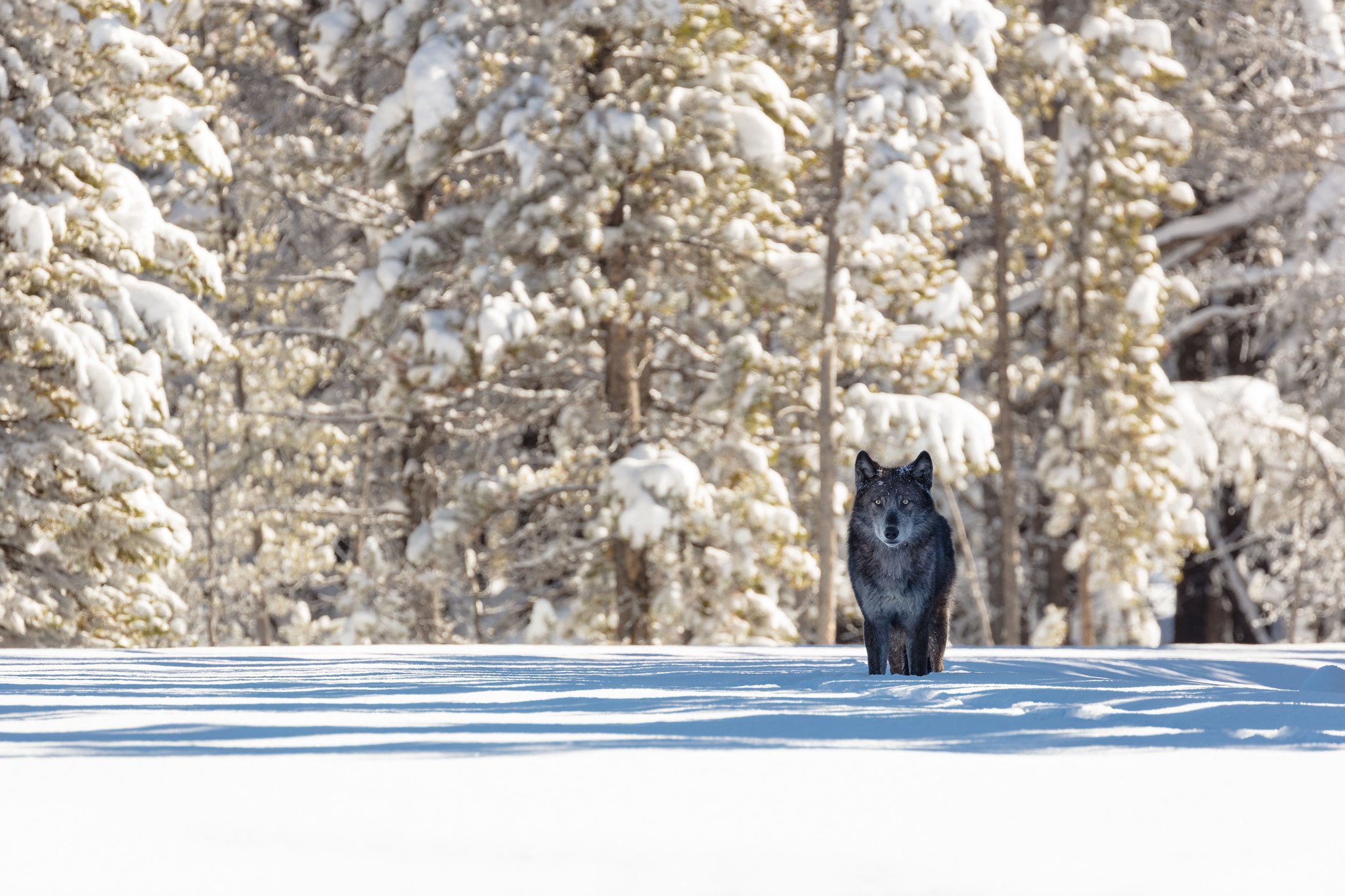 And so the cycle of seasons in Yellowstone begins again, much as it has for millennia.
And so the cycle of seasons in Yellowstone begins again, much as it has for millennia.
Jenny Golding is the founding editor of A Yellowstone Life and writes from her home at the north entrance to Yellowstone in Gardiner, Montana.
For more travel experiences to Beautiful Places on Earth™ available from Xanterra Travel Collection® and its affiliated properties, visit xanterra.com/explore.
Want to experience Yellowstone in-depth? See what makes Yellowstone National Park a great place to work for a season or longer!
